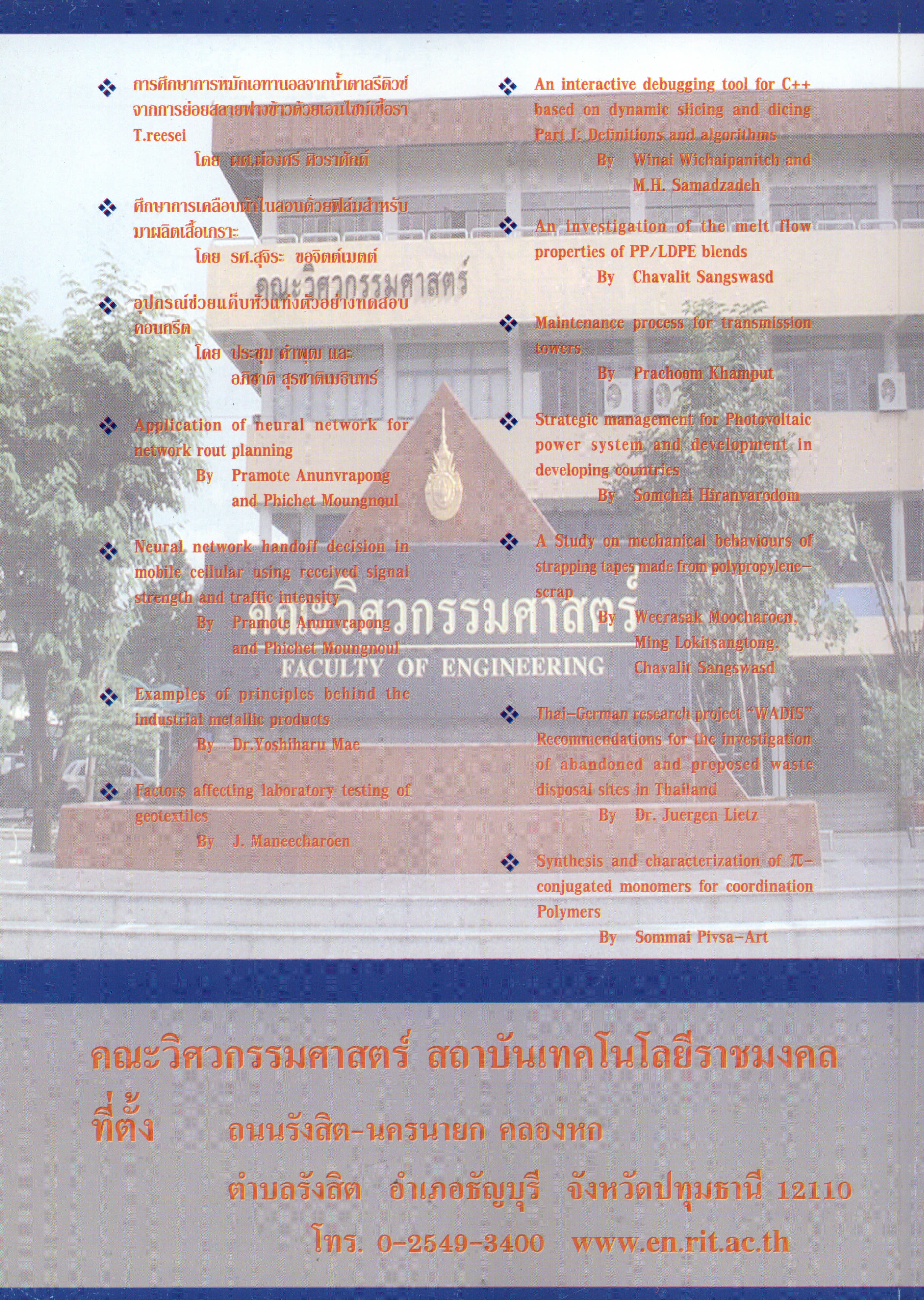An Investigation of the Melt Flow Properties of PP/LDPE Blends
Main Article Content
Abstract
Blends of the polypropylene with polyethylene have been prepared by using a Brabender twin-screw extruder. The flow properties of the blends were measured with the Davenport capillary rheometer. The dependence of shear stress on shear rate was approximately represented, for all the blends, by the power law equation. The manner of the dependence of blend viscosity on composition varies widely for the system studied. The viscosity of the blends at 200 degree Celsius goes through a minimum, all the viscosity of the blends at 230 degree Celsius go through a maximum. However, the viscosity of the blends, which have the same shear stress at 230 degree Celsius become lower than those of 200°c. It is possible to produce blends with either greater or less melt viscosity than the individual components by adjusting the composition of blending.
Article Details
The manuscript, information, content, picture and so forth which were published on Frontiers in engineering innovation research has been a copyright of this journal only. There is not allow anyone or any organize to duplicate all content or some document for unethical publication.
References
2. J.F. Carley, Viscosites of Molten Polymer Blends, Polymer Engineering and Science,vol.21, No.4, March (1981)
3. D.R. Paul, Polymer Blends, volume 1, p35,69 (1978)
4. J.M.Dealy, Rheometers for Molten Plastics,p.83 , 199(1982)
5. C.D. Han, Rheology in Polymer Processing,p 166-182 (1976)
6. C.D.Han, Multiphase in Polymer Processing ,p174, 182 (1981)
7. H. van Oene, Polymer Blends, p 331-334(1978)
8. ICI Plastics Division, Propathene? Technical Service, Technical Note p133
9. BP Chemicals, Novex, Data Sheet,Technigram N 50


